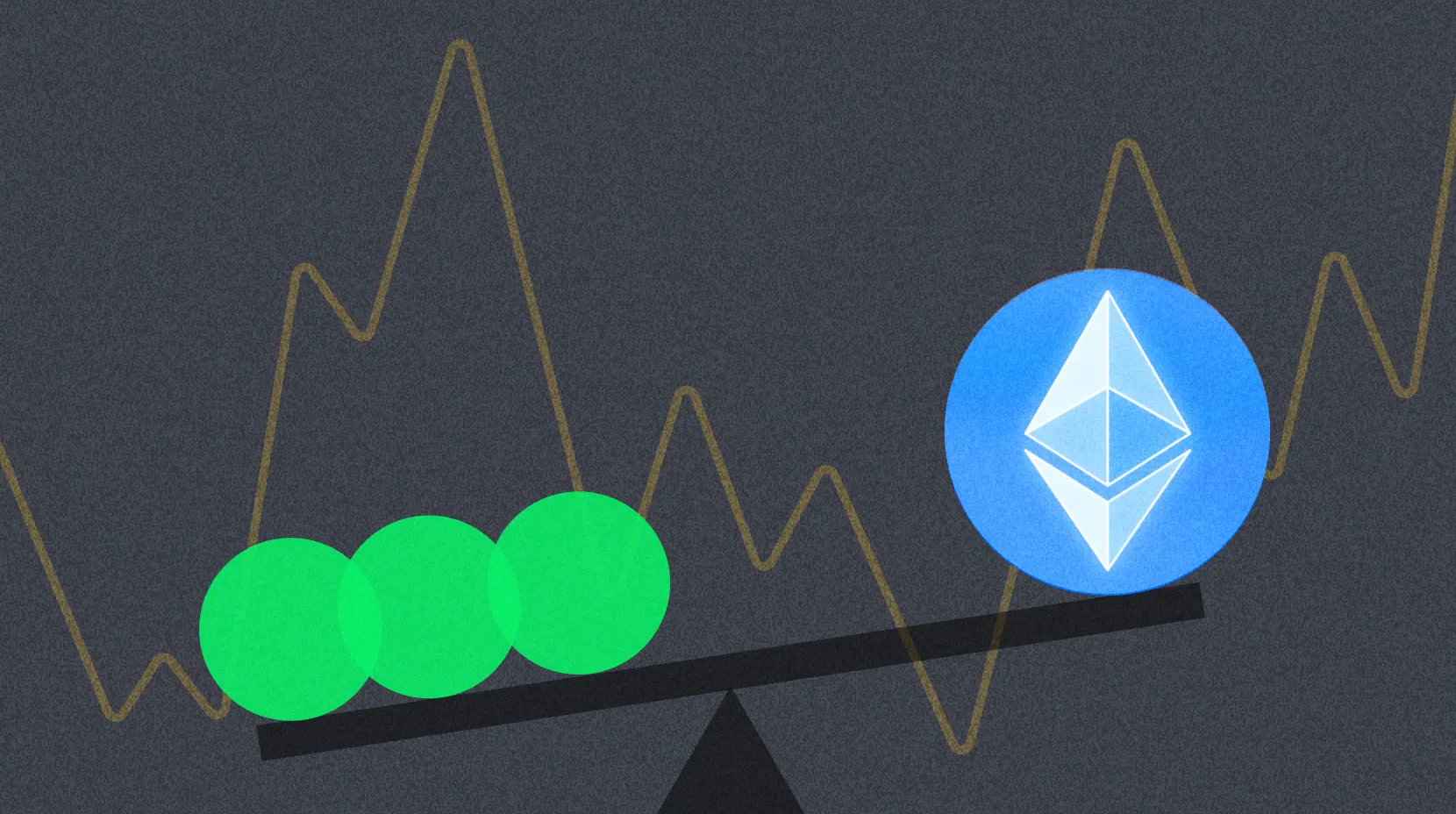Introducción a Polygon (MATIC)
En el Módulo 1, nos embarcaremos en un emocionante viaje al mundo de Polygon (anteriormente conocido como MATIC), una solución de escalado multicadena para la red Ethereum. Profundizaremos en el futuro de los ecosistemas multicadena y obtendremos una visión general completa de Polygon, explorando su visión, evolución de Matic Network a Polygon y una comparación que invita a la reflexión con Cosmos en el contexto de la creación de un "Internet de blockchains".
El Futuro de los Ecosistemas Multi-Cadena
En el mundo en constante evolución de la tecnología blockchain, el concepto de una sola cadena de bloques que sirva para todos los propósitos parece cada vez más obsoleto. El futuro, como muchos expertos predicen, radica en ecosistemas de múltiples cadenas. Estos ecosistemas no son solo una mera colección de diferentes cadenas de bloques, sino una integración armoniosa de ellas, cada una sirviendo a su propósito único y, sin embargo, interconectadas de manera fluida.
La idea detrás de los ecosistemas de múltiples cadenas es simple: ¿Por qué depender de una sola cadena de bloques cuando se pueden aprovechar las fortalezas de muchas? Diferentes cadenas de bloques tienen diferentes fortalezas. Algunas están optimizadas para la velocidad, otras para la seguridad y otras para aplicaciones específicas como finanzas descentralizadas o gestión de la cadena de suministro. Al integrar múltiples cadenas en un mismo ecosistema, es posible aprovechar las fortalezas de cada una, creando un sistema que es más robusto, escalable y versátil que cualquier sola cadena de bloques.
Pero ¿por qué hay un repentino cambio hacia los ecosistemas multi-cadena? La respuesta radica en las limitaciones de las blockchains existentes. Ninguna sola blockchain puede satisfacer las diversas necesidades de todas las aplicaciones descentralizadas (DApps). A medida que aumenta el número de DApps, también lo hace la presión sobre la blockchain subyacente, lo que lleva a problemas como congestión, altas tarifas de transacción y tiempos de confirmación lentos.
Además, a medida que el espacio blockchain madura, hay una creciente realización de que diferentes aplicaciones tienen diferentes requisitos. Una DApp centrada en juegos podría priorizar la velocidad y la experiencia del usuario, mientras que una aplicación financiera podría priorizar la seguridad y el cumplimiento. En un ecosistema de múltiples cadenas, cada aplicación puede elegir la cadena de bloques que mejor se adapte a sus necesidades, sin comprometer otros aspectos.
Visión general de Polygon y su visión
Polygon, anteriormente conocido como Matic Network, surgió como un rayo de esperanza en el mundo congestionado de las DApps basadas en Ethereum. Prometió transacciones más rápidas y más baratas sin comprometer la seguridad. Pero a medida que el proyecto evolucionaba, quedó claro que su visión era mucho más ambiciosa. Polygon aspiraba a no ser solo una solución de escalado, sino una plataforma para fomentar el crecimiento de ecosistemas multi-cadena en Ethereum.
En su núcleo, Polygon es un marco para construir y conectar redes de blockchain compatibles con Ethereum. Es como un puente que permite que diferentes blockchains se comuniquen entre sí y con Ethereum. Esta interoperabilidad es crucial para la visión de un futuro multi-cadena, donde diferentes blockchains coexisten y se complementan entre sí.
Pero lo que realmente distingue a Polygon es su flexibilidad. Los desarrolladores pueden construir cualquier tipo de cadena de bloques, desde cadenas independientes hasta soluciones de capa 2, utilizando el marco Polygon. Estas cadenas de bloques pueden heredar la seguridad de Ethereum o establecer sus propios mecanismos de consenso. Esta flexibilidad significa que los desarrolladores no están restringidos por las limitaciones de una sola plataforma. Pueden elegir las mejores herramientas para sus necesidades, lo que garantiza un rendimiento y una experiencia de usuario óptimos.
La visión de Polygon es crear un mundo donde el potencial de la cadena de bloques se realice plenamente. Un mundo donde las aplicaciones descentralizadas se ejecuten sin problemas, sin las limitaciones de velocidades lentas o tarifas elevadas. Un mundo donde los usuarios no tengan que saber o preocuparse por en qué cadena de bloques se ejecuta una aplicación, porque todas funcionan juntas en armonía.
Para lograr esta visión, Polygon se enfoca en tres áreas clave: escalabilidad, seguridad y experiencia de usuario. Su arquitectura multi-cadena garantiza que el sistema pueda manejar un gran número de transacciones sin ralentizarse. Su compromiso con la compatibilidad de Ethereum garantiza que las DApps puedan migrar a Polygon con cambios mínimos. Y su enfoque en la experiencia del usuario garantiza que el uso de aplicaciones basadas en Polygon sea tan fácil e intuitivo como el uso de cualquier aplicación tradicional.
La visión de Polygon es llevar los beneficios de la cadena de bloques a las masas. Su objetivo es crear un mundo donde la cadena de bloques no sea solo una palabra de moda, sino una tecnología que impulse la próxima generación de internet. Un mundo donde las aplicaciones descentralizadas, transparentes y seguras sean la norma, no la excepción. Y con su enfoque innovador y enfoque implacable en la experiencia del usuario, Polygon está en camino de hacer realidad esta visión.
Evolución de Matic Network a Polygon
Matic Network comenzó su viaje como una solución de escalabilidad para Ethereum, abordando algunos de los problemas más apremiantes enfrentados por la comunidad de Ethereum, como la lentitud de las transacciones y las altas comisiones de gas. Con sus soluciones de escalabilidad de Capa 2, Matic Network prometió transacciones más rápidas y eficientes, convirtiéndose en un favorito instantáneo tanto entre desarrolladores como usuarios.
Sin embargo, a medida que evolucionó el espacio de la cadena de bloques, también lo hizo la visión de Matic Network. El equipo detrás de Matic se dio cuenta de que los desafíos que enfrentaba el mundo de la cadena de bloques no se trataban solo de escalar. Había una imagen más grande: la necesidad de un ecosistema de múltiples cadenas donde varias cadenas de bloques pudieran coexistir e interactuar sin problemas. Esta realización llevó al nacimiento de Polygon.
La transición de Matic Network a Polygon no fue solo un cambio de marca, sino un cambio fundamental en la estrategia y visión. Mientras que Matic Network era principalmente una solución de escalado de Capa 2, Polygon apuntaba a ser una plataforma completa para construir y conectar blockchains compatibles con Ethereum. Esto significaba que los desarrolladores ahora podían crear blockchains soberanas con sus propios mecanismos de consenso y al mismo tiempo disfrutar de los beneficios de la seguridad y el ecosistema de Ethereum.
Una de las fuerzas impulsoras detrás de esta evolución fue la comprensión de que el futuro de la cadena de bloques no estaba en silos aislados, sino en redes interconectadas. Así como internet conectó computadoras y redes dispares, el ecosistema futuro de la cadena de bloques necesitaba una forma de conectar diferentes cadenas, permitiéndoles comunicarse y compartir información.
Otro factor fue el rápido crecimiento e innovación en el espacio de la cadena de bloques. Nuevos proyectos y tecnologías estaban surgiendo a un ritmo vertiginoso, cada uno con sus propias fortalezas y debilidades. En lugar de competir con estos proyectos, Polygon tenía como objetivo crear una plataforma donde todas estas innovaciones pudieran reunirse, creando una suma mayor que sus partes.
El nombre "Polygon" en sí mismo refleja esta visión. Un polígono, por definición, es una forma cerrada con múltiples lados. Del mismo modo, Polygon tiene como objetivo reunir varias blockchains, cada una con sus fortalezas únicas, en un todo coherente. Esta visión de unidad y colaboración está en el corazón de la filosofía de Polygon.
Comparación con Cosmos y el "Internet de Cadenas de Bloques"
Cosmos, a menudo referido como el “Internet de las Cadenas de Bloques,” es otro proyecto ambicioso que tiene como objetivo crear un ecosistema interconectado de cadenas de bloques. Tanto Polygon como Cosmos comparten la visión de un futuro multi-cadena, pero sus enfoques y filosofías difieren en varios aspectos clave.
En su núcleo, Cosmos es una red descentralizada de blockchains independientes y paralelos, cada uno impulsado por algoritmos de consenso BFT clásicos. El Cosmos Hub, la cadena central en el ecosistema de Cosmos, conecta estas blockchains soberanas, permitiéndoles comunicarse y compartir información. Este diseño tiene como objetivo crear un ecosistema escalable e interoperable sin comprometer la soberanía de las cadenas individuales.
Polygon, por otro lado, ofrece un marco para construir blockchains compatibles con Ethereum. Si bien también visualiza una red interconectada de blockchains, su enfoque principal es garantizar la compatibilidad con Ethereum, la plataforma de contratos inteligentes más popular del mundo. Esto asegura que los desarrolladores puedan migrar fácilmente sus DApps de Ethereum a Polygon, disfrutando de los beneficios de transacciones más rápidas y económicas sin tener que reescribir su código.
Otra diferencia clave radica en los mecanismos de consenso. Mientras que Cosmos permite que las blockchains tengan sus propios mecanismos de consenso, la arquitectura de Polygon está construida en torno a la Máquina Virtual Ethereum (EVM). Esto asegura que todas las cadenas basadas en Polygon compartan el mismo modelo de seguridad y consenso, lo que las hace inherentemente compatibles entre sí y con Ethereum.
Sin embargo, es esencial entender que tanto Polygon como Cosmos no son competidores, sino proyectos complementarios. Si bien tienen enfoques diferentes, su objetivo final es el mismo: crear un ecosistema de blockchain descentralizado, escalable e interoperable. Ambos proyectos reconocen las limitaciones de las blockchains existentes y buscan abordarlas de formas únicas.
En muchos aspectos, la comparación entre Polygon y Cosmos recuerda a los primeros días de internet. Así como diferentes protocolos y tecnologías se unieron para crear el internet moderno, proyectos como Polygon y Cosmos están sentando las bases para la próxima generación del ecosistema blockchain.
Aspectos destacados
- Polygon tiene como objetivo abordar los desafíos de escalabilidad e interoperabilidad en el ecosistema blockchain.
- Como solución de escalabilidad multi-cadena, Polygon mejora las capacidades de Ethereum sin comprometer su descentralización.
- La visión de Polygon es crear un internet descentralizado de blockchains, permitiendo que diferentes redes se comuniquen sin problemas.
- La transición de Matic Network a Polygon significa una evolución en su misión y capacidades.
- Si bien tanto Polygon como Cosmos tienen como objetivo crear una "Internet de cadenas de bloques", sus enfoques y arquitecturas difieren. Cosmos opera como un centro con varias cadenas de bloques independientes, mientras que Polygon se enfoca en mejorar las capacidades de Ethereum con su marco multicadena.





